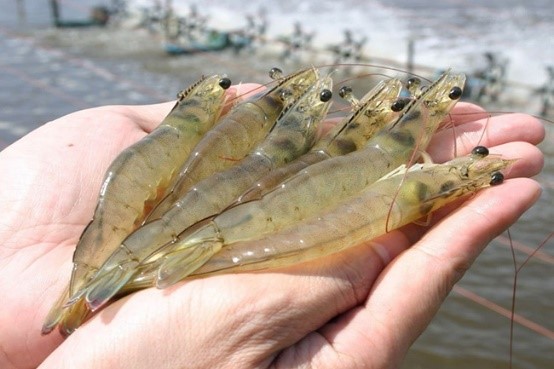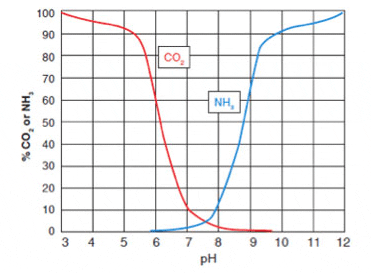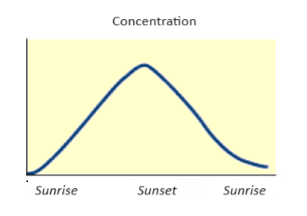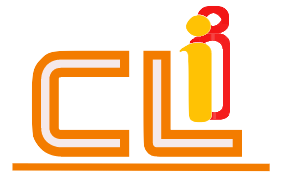CLI-SMARTAQUAMAN AUTOMATED AQUACULTURE WATER QUALITY MONITORING SYSTEM
Aquaculture is an important economic sector in Vietnam, contributing significantly to GDP and food security. With the rapid development of technology, the application of modern solutions to improve aquaculture efficiency is becoming an inevitable trend.
Aquaculture includes a variety of activities, from freshwater and marine fish farming to shellfish farming and seaweed farming. Through careful management of water quality, nutrition, disease control and environmental conditions, aquaculture aims to ensure the healthy growth and sustainable production of aquatic organisms, contributing to ensure food security, economic development and ecological conservation.
Chau Long Company - a leading provider of smart monitoring solutions applying the latest technologies in Artificial Intelligence (AI), Internet of Things (IoT) has researched and developed the Cli-SmartAquaMan automated aquaculture water quality monitoring solution helps farmers improve production efficiency, reduce risks and improve product quality.
Below is an introduction to the water environment monitoring system and automatic control of seafood care applying AI technology.
The system includes water quality sensors for aquaculture, 24/7 monitoring cameras connected to water fan control, and shrimp feeding machines.

System components:
* Water quality sensors to monitor important water environmental parameters in farming ponds.
Parameters that affect shrimp health (a type of seafood that is widely cultivated in Vietnam) include:
Water temperature: Temperature affects the growth rate and survival rate of seafood. The best temperature for shrimp is 26 - 30°C. Pay attention when the temperature rises above 32°C. At a temperature of 35°C, 100% of shrimp under one month old die; Above 40°C, all shrimp will die. At low temperatures, shrimp will grow slowly.
EC salinity: EC salinity affects the risk of shrimp diseases (such as hepatopancreatic disease). The appropriate salinity for black tiger shrimp and white leg shrimp is 5 - 35 (‰ - parts per thousand).
pH: pH affects the health of shrimp, should not fluctuate more than 0.5 units during the day to avoid shock to shrimp, optimal pH for shrimp is 7.5 - 8.5.

Figure 1: Correlation of CO2 and pH, affecting the toxicity of NH3
Dissolved oxygen: Dissolved oxygen DO is oxygen for shrimp underwater. Maintaining DO levels in water is essential for successful production because oxygen (O2) has a direct effect on feed intake, disease resistance and metabolism. Shrimp farming water must ensure dissolved oxygen > 3.5 mg/l, but the optimal level is > 5 mg.

Figure 2: Daily oxygen cycle in the pond
Redox level: ORP creates a suitable environment for beneficial nutritional bacteria to grow, promoting better aerobic decomposition of organic compounds, resulting in good water quality and clean pond bottom.
Sensor parameters:

* Camera: 1600x1200 resolution, integrated Artificial Intelligence (AI) to take pictures of underwater shrimp, IP68 environmental protection, can be soaked in seawater for a long time, integrated light to help take pictures at night.
* Data logger: Data logger is used to collect data automatically from sensors. In addition, the data logger is integrated with software and an Artificial Intelligence (AI) hardware accelerator card that analyzes image data and monitors the environment, creating early warnings to change aquaculture regimes. production, maximize production and business efficiency.
* Software: Software is used to analyze data from sensors. The software can be used to create charts and graphs, and to identify trends in data.
* Warning system: Warning system is used to warn fish farmers about water quality problems. Warning systems can be audio or visual warning systems.
* Other components:
Input and output control ports: Each equipment cluster has available control ports for water fans, food opening and closing and other input and output ports with pre-programmed automatic control as required.
Power source: Supports grid power or solar battery with battery.
Cloud data model: Data from shrimp farming water environment monitors via Wifi and Bluetooth networks to mobile Internet-connected devices, updated in real time to servers on the cloud.
User interface: The software displays measurements and images from cameras on a GIS-web map, which can be easily viewed by shrimp pond operators on tablets and mobile devices. Warnings for exceeding pH, DO, and salinity thresholds are sent via text message.
The system allows connection to remotely control equipment (water fan, shrimp feeder, oxygen pump …).
Outstanding features of AI technology:
* Biomass monitoring
Biomass monitoring plays an important role in aquaculture as it involves measuring and evaluating the total weight or mass of fish and shrimp populations on the farm. As such, this process provides important insights into the overall health, growth and productivity of livestock populations. Accurate measurements and biomass monitoring enable aquaculturists to make informed decisions about feeding regimes, disease management and stocking densities. Monitoring is a fundamental tool to ensure optimal conditions and maximize production efficiency in aquaculture systems, allowing farmers to monitor the progress of their fish farming, evaluate the effectiveness of management practices and contribute to responsible and sustainable aquaculture practices.
Traditional biomass estimation methods in aquaculture rely on labor-intensive and time-consuming methods such as manual weighing and sampling. These methods pose a number of limitations that hinder their effectiveness. Manual weighing and sampling only examines a group of fish/shrimp/clams at a specific time, providing limited insights into growth patterns and behavior. Additionally, these methods can cause discomfort to the animal, cause stress, and may cause harm during handling. Notably, the scale and scale of commercial aquaculture operations make it difficult to obtain accurate and representative samples using traditional methods. The limitations of traditional biomass estimation methods highlight the need for more efficient and accurate alternatives, such as AI-based technology, that can overcome these challenges and provide the ability to provide personal, real-time monitoring of aquatic biota in a non-intrusive manner.
* Real-time monitoring of the water environment
Analyze data accurately and in real time, to detect potential problems affecting fish and shrimp health and water quality. Alerting farmers to potential problems so they can promptly treat water quality problems before they affect shrimp helps increase survival rates. Artificial intelligence has the potential to revolutionize biomass estimation in aquaculture by providing accurate and real-time data analysis, improving efficiency and optimizing production processes. AI algorithms can analyze a variety of data sources, including water quality parameters, feeding patterns and environmental conditions, to predict and estimate biomass growth in aquaculture environments. Tirelessly monitoring and processing this data, AI solutions can provide valuable insights into the health, growth, and feeding needs of aquatic organisms. This information allows aquaculture operators to make data-driven decisions, optimize feed management and ensure optimal conditions for growth. AI-based biomass estimation not only improves accuracy but also reduces labor-intensive manual measurements and enhances the overall productivity and profitability of aquaculture operations. Furthermore, by freeing the workforce from repetitive monitoring tasks, aquaculture operators can allocate their time and expertise to other important aspects of fish farming, such as disease management, water quality control and farm optimization.
AI supports the automation of biomass monitoring in aquaculture, integrating computer vision and image analysis technology, automatically counting and measuring the size of aquatic organisms, eliminating the need for manual assessment. AI-powered solutions can analyze images or videos captured in aquaculture facilities and accurately identify and track individual organisms, providing real-time data on tissue biomass distribution and growth patterns. This organizational change saves time and labor, improves accuracy, and reduces human error. Don't forget that AI algorithms can learn and adapt over time, continuously improving performance and enhancing the accuracy of biomass estimates. Leveraging AI technology to support aquaculture operators with a future-proof tool that streamlines and optimizes biomass estimation processes, enabling improved productivity, management better resources and increased profits in the industry.
* Automatic feeding
Using cameras and AI to identify fish and shrimp, monitor their biomass and size, automatically adjust the amount of food and feeding time to suit the nutritional needs of animals, helping to reduce food waste and improve feed efficiency.
* Seafood health management
Using cameras and AI to monitor the behavior and images of fish and shrimp, alert farmers about sick seafood cases so they can promptly treat them.
* Forecast
Use data on environment, food, fish health,... to predict productivity, output and product quality, helping farmers plan effective production and minimize risks.
It can be said that applying AI to aquaculture in general and shrimp farming in particular brings many benefits to the industry, including:
- Improve productivity and production efficiency
- Minimize risks and damages due to epidemics
- Improve product quality
- Meet export market needs
- Increase people's income
- Improve environmental sustainability
In addition to being applied to shrimp farming, the Cli-SmartAquaMan automatic aquaculture water monitoring system can be used in many different types of aquaculture such as: Fish farming, mollusk farming, seaweed farming …
To explore and receive detailed advice about this solution, customers and partners please contact the Technical Consulting Department as soon as possible for the best service!


